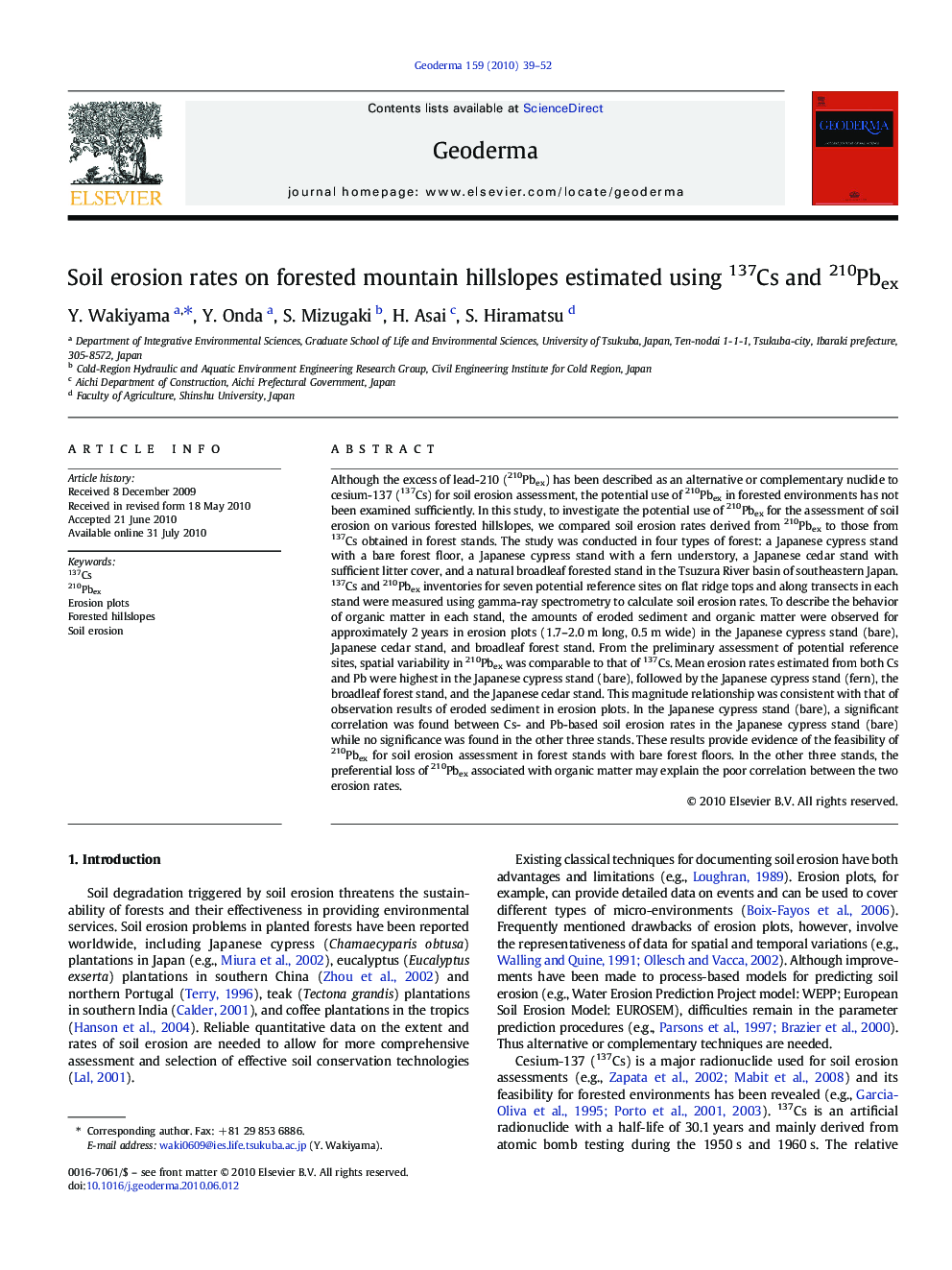| Article ID | Journal | Published Year | Pages | File Type |
|---|---|---|---|---|
| 4574529 | Geoderma | 2010 | 14 Pages |
Although the excess of lead-210 (210Pbex) has been described as an alternative or complementary nuclide to cesium-137 (137Cs) for soil erosion assessment, the potential use of 210Pbex in forested environments has not been examined sufficiently. In this study, to investigate the potential use of 210Pbex for the assessment of soil erosion on various forested hillslopes, we compared soil erosion rates derived from 210Pbex to those from 137Cs obtained in forest stands. The study was conducted in four types of forest: a Japanese cypress stand with a bare forest floor, a Japanese cypress stand with a fern understory, a Japanese cedar stand with sufficient litter cover, and a natural broadleaf forested stand in the Tsuzura River basin of southeastern Japan. 137Cs and 210Pbex inventories for seven potential reference sites on flat ridge tops and along transects in each stand were measured using gamma-ray spectrometry to calculate soil erosion rates. To describe the behavior of organic matter in each stand, the amounts of eroded sediment and organic matter were observed for approximately 2 years in erosion plots (1.7–2.0 m long, 0.5 m wide) in the Japanese cypress stand (bare), Japanese cedar stand, and broadleaf forest stand. From the preliminary assessment of potential reference sites, spatial variability in 210Pbex was comparable to that of 137Cs. Mean erosion rates estimated from both Cs and Pb were highest in the Japanese cypress stand (bare), followed by the Japanese cypress stand (fern), the broadleaf forest stand, and the Japanese cedar stand. This magnitude relationship was consistent with that of observation results of eroded sediment in erosion plots. In the Japanese cypress stand (bare), a significant correlation was found between Cs- and Pb-based soil erosion rates in the Japanese cypress stand (bare) while no significance was found in the other three stands. These results provide evidence of the feasibility of 210Pbex for soil erosion assessment in forest stands with bare forest floors. In the other three stands, the preferential loss of 210Pbex associated with organic matter may explain the poor correlation between the two erosion rates.
